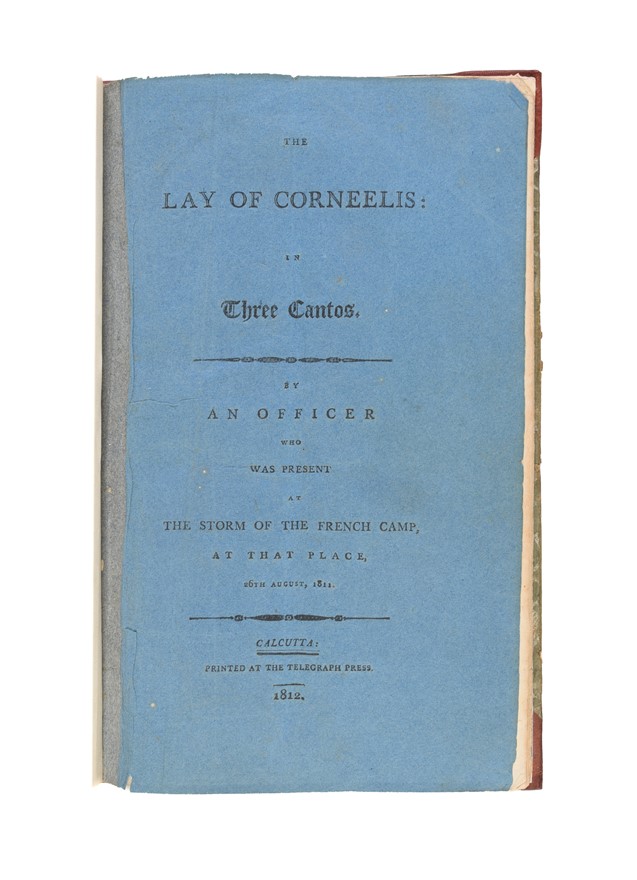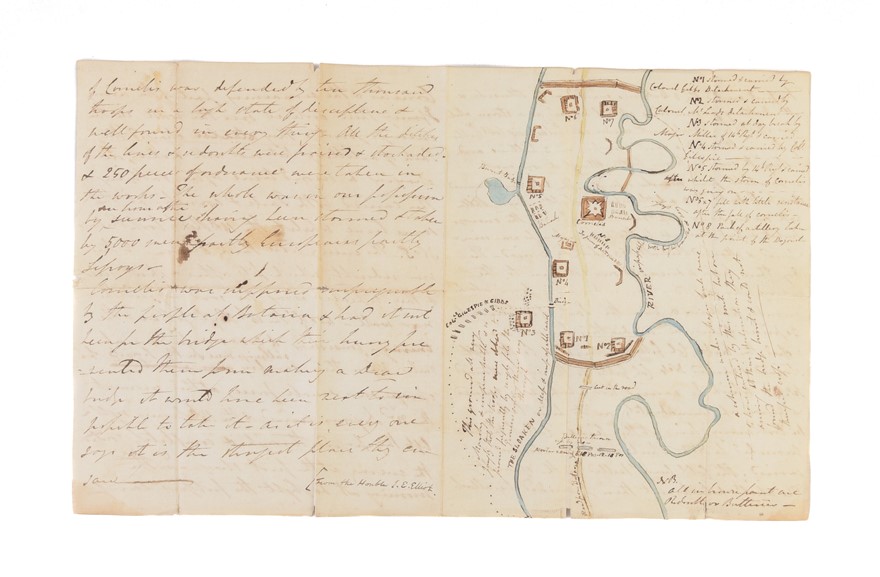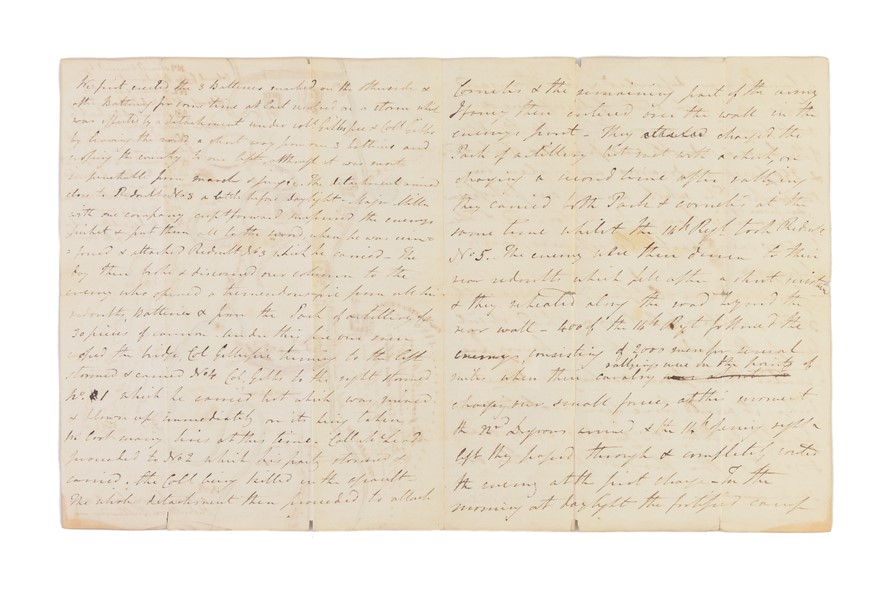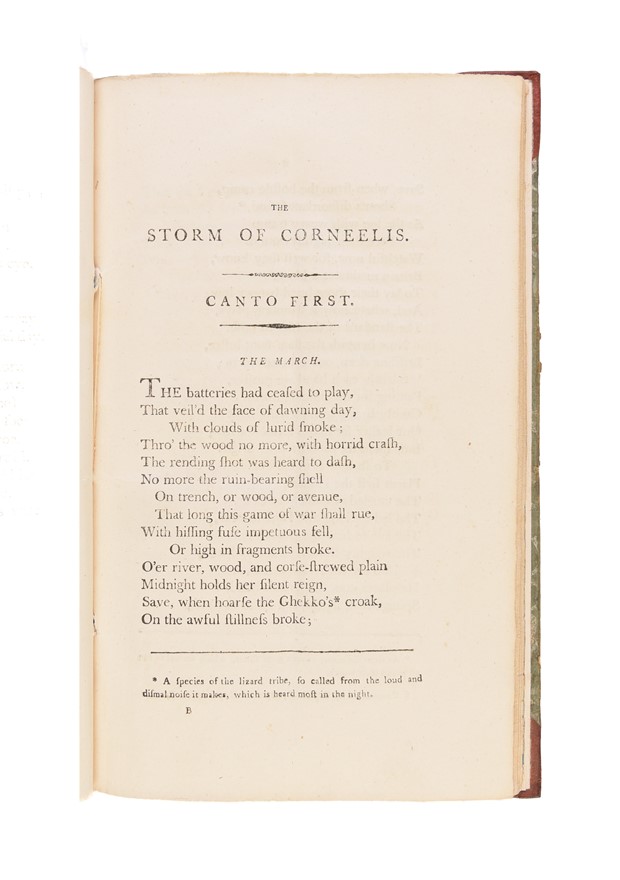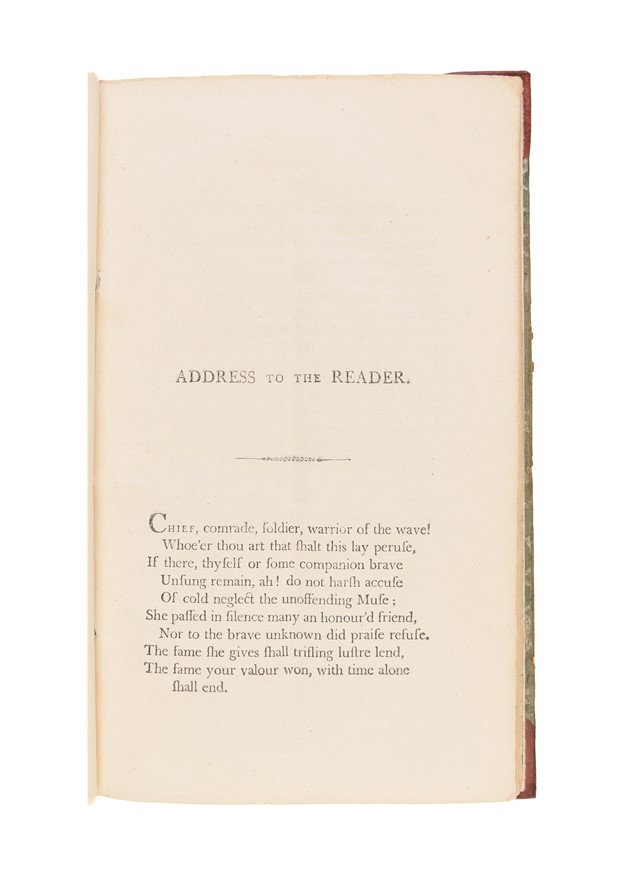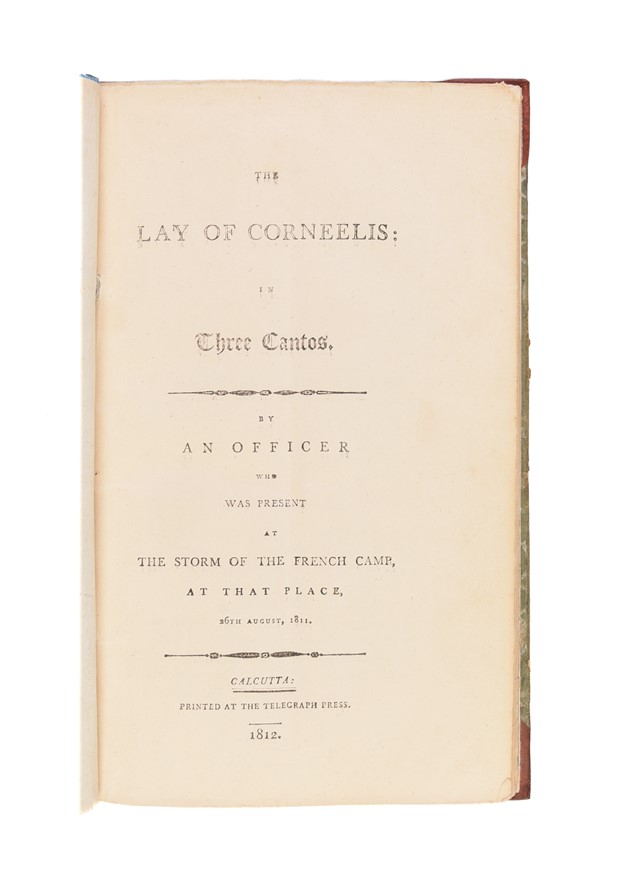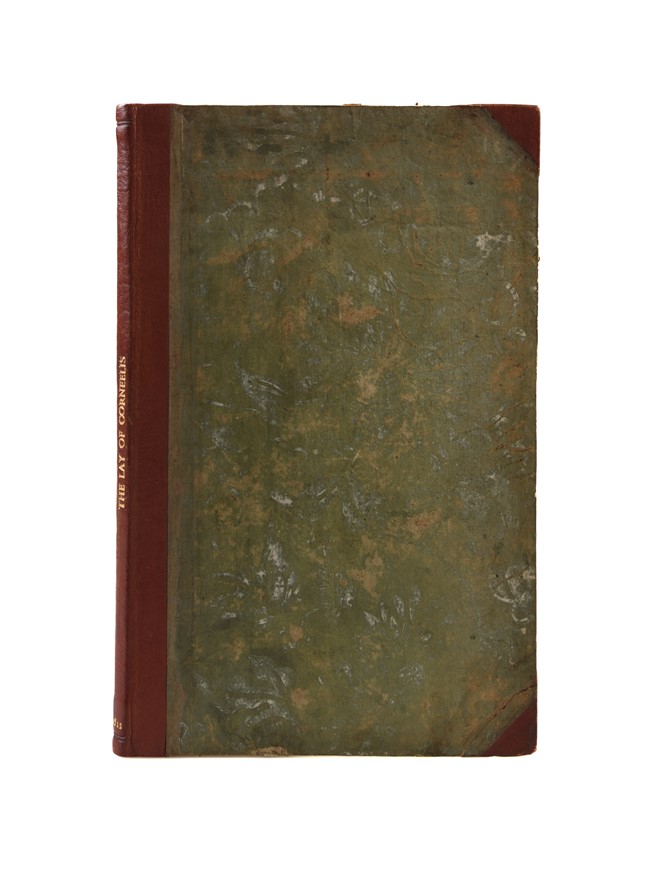The Lay of Corneelis:
TAYLOR Thomas William attributed to, (1812.)
£4500.00 [First Edition]
Please contact us in advance if you would like to view this book at our Curzon Street shop.
A POETICAL DESCRIPTION OF THE TAKING OF FORT CORNELIS IN JAVA
in Three Cantos. By an Officer who was present at The Storm of the French Camp, at that place 26th August, 1811.
First Edition. 8vo (236 x 147mm). [4], 64pp. Very lightly browned in places, folded (possibly for postage), a few minor spots but otherwise clean. Original blue printed paper wrappers (wrappers neatly re-attached in the inner margin with later paper (not touching any of the text), a little creased and marked). Bound in modern patterned boards, calf spine lettered in gilt.
Calcutta: at the Telegraph Press,
Rare. OCLC records BL and Bodley [with MS corrections by the author - Lord Minto's (?presentation) copy] in the UK and Harvard only in the US. Only one copy (the present copy) recorded on Rare Book Hub. The presentation inscription reads: "To / R[ichard] Strachey Esq / from W Taylor"
A first-hand poetic description - printed in Calcutta - of the important Siege of Fort Cornelis on the island of Java.
The British forces captured Fort Cornelis from the Dutch and French forces during the Napoleonic Wars on 26th August 1811. The storming of the fort was a crucial victory for the British forces but resulted in over 600 casualties.
This copy of the poem was presented by the author to Richard Strachey (1781-1847) of Ashwick Grove, Shepton Mallet (near Bath). Strachey was the third son of Lord Clive's (of India) private secretary, Sir Henry Strachey (1736-1810)
Tipped into this copy is a manuscript errata list (most likely in the author's hand) which corresponds with the corrections made in the text in the Minto copy at Bodley [the errata is on paper watermarked 1809).
The present copy also contains a loosely inserted manuscript document which includes additional first-hand information about the siege and a carefully annotated manuscript plan. The manuscript note is signed (in a different hand) "From the Honble J. E. Elliot" and includes a lengthy account of the siege including the actions of Colonel Gillespie who is honoured in the present poem [see below]. The paper is watermarked "1809" and the information may well have been used in the preparation of the poem.
In his address to the reader Taylor directs his verse specifically to "Chief, comrade, soldier, warrior of the wave!" suggesting that the poem was specifically written and printed for his fellow comrades.
The verse includes numerous footnotes explaining specifics about military tactics, foreign words, and identifying comrades.
In the footnotes Taylor positions himself in the action noting at one point "The column was again advancing before I came up" (p.7)
He describes:
The Riflemen of aim approved:
"All clad in dusky green;
Black were their belts with pouch of ball,
And loading horn, and wooden mall;
With these they load, when their foemen fall
From hands by them unseen:
But when the battle rages nigher,
With cartouch quick they load and fire,
Or sabre on the muzzle fix,
And hand to hand in combat mix.
Then comes the soldier few can peer,
Britain's dauntless grenadier;
High his stature, muscles firm,
His it is to mount the berm,
And, amid the deadly breach,
His, the opposing foe to teach
How firm the heart, how strong the hand,
Nurtured on our sea-beat strand.
He, prepared for open war..." (p.8)
The first canto ends with the death of Colonel Rollo Gillespie who is celebrated in a separate "Dirge":
"Adieu! then, for ever, and calm be your slumbers.
May the sod on this island lie light on your breast!
Nor scorn, gallant warriors, a soldier's rough numbers,
If faintly they reach the abode of your rest" (p.38)
The second canto celebrates great military leaders such as Wolfe, Abercromby and Nelson.
Towards the end of the poem Taylor describes the drunken celebrations (he writes of "liquid topaz" - explaining in the footnote, "If Claret, or red Wine, is liquid ruby, why should not Madeira, which this was, be liquid topaz"). Taylor notes that he personally saw soldiers drinking "whole casks of tempting liquor" (p.44)
Stock Code: 247315
